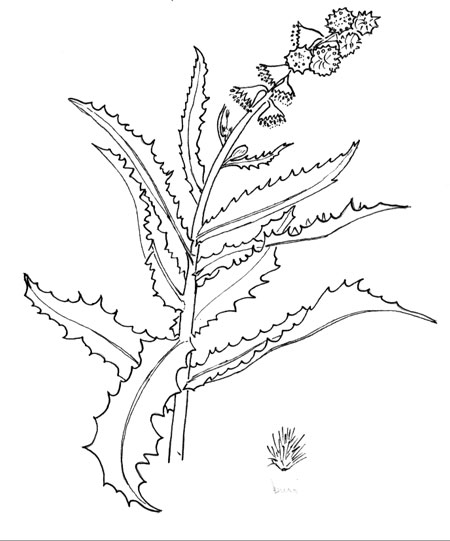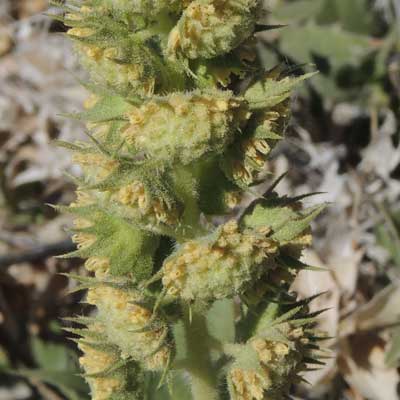Holly-leaf Bursage
Ambrosia ilicifolia

Drawn from live specimen observed in the Gila Mountains, Yuma County, Arizona. At lower right is an enlarged view of a bur - a series of spiny bracts enclosing an achene.
RANGE: Found in the hottest, lowest elevation areas of the Sonoran Desert mostly along sandy washes and canyons near the Lower Colorado River.
LEAVES: After dying, the sharply serrate leaves remain attached to the
plant for many seasons bleaching almost white in the sun and thus protecting
the plant base from direct sunshine and thirsty animals. Margins of the very stiff leaves are spiny.
SHRUB: A low shrub usu. less than 30 cm tall.
ARMED. Leaf edges are spiny.
FRUIT: A bur as shown at lower right in the illustration.
FLOWERS: Very similar to other bursages: Heads of green male flowers above the female flower heads which usually have just one flower. In the photo
below there are about ten heads of male flowers and each head is comprised of some two dozen small male florets. The abundant pollen is yellow and ready to be released
into the wind - these are wind pollinated plants.
